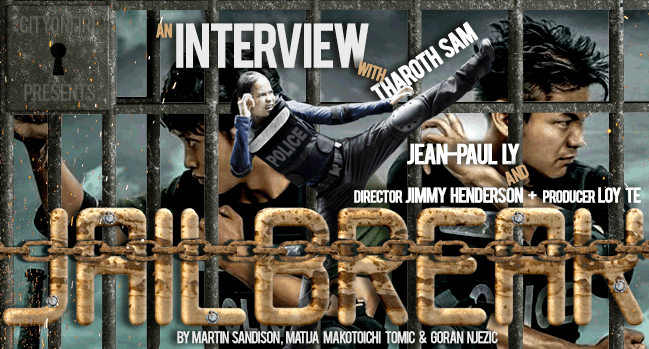 This year’s 19th edition of Far East Film Festival offered a special treat for the fans of martial arts cinema. The long-awaited hit title Jailbreak, titled as Cambodia’s very first martial arts movie was scheduled for screening on the opening day of the festival. Coming to Udine to promote the movie was the Jailbreak team: director Jimmy Henderson and producer Loy Te, as well as the film’s stars Jean-Paul Ly and Tharoth Sam. It is there that we got the chance to enjoy a private talk with these special guests. Here’s what they had to say…
This year’s 19th edition of Far East Film Festival offered a special treat for the fans of martial arts cinema. The long-awaited hit title Jailbreak, titled as Cambodia’s very first martial arts movie was scheduled for screening on the opening day of the festival. Coming to Udine to promote the movie was the Jailbreak team: director Jimmy Henderson and producer Loy Te, as well as the film’s stars Jean-Paul Ly and Tharoth Sam. It is there that we got the chance to enjoy a private talk with these special guests. Here’s what they had to say…
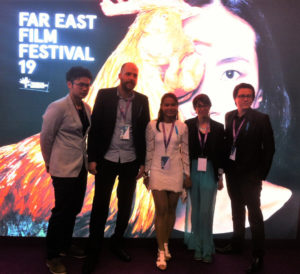
The cast and crew of Jailbreak: Jean-Paul Ly, director Jimmy Henderson, Tharoth Sam and producer Loy Te.
MATIJA TOMIC: Jimmy, if I understood correctly, you were born in Italy?
JIMMY HENDERSON: Yes, I was born in Italy and I live in Cambodia for six and a half years now.
MATIJA TOMIC: What inspired you to direct a martial arts movie in Cambodia?
JIMMY HENDERSON: Well, I’ve always been a big fan of martial arts films. I grew up with Van Damme and Bud Spencer and all of those guys, and then when I moved to Cambodia I found the cinema needed something different. There was a lot of talent around martial artists, and I thought why not try to explore this option. Cambodian cinema is very saturated with horror comedy, only one type of genre. Making a martial arts film was something new that I wanted to expose to the local audience, for the local taste. That’s how the idea of making this film came about.
In 2012. I tested the water with another film called Hanuman, much smaller, more contained film. We had eight stuntmen at the time and we kept recycling all the fight scenes. Since then the team has grown and when we met JP things began to develop more and we ended up making Jailbreak together.
MATIJA TOMIC: Can we expect another collaboration, more martial arts films from Cambodia?
LOY TE: I hope so.
JIMMY HENDERSON: Yeah, now we’re running the festival circuit, and then by the end of the year, we will know more. What are the numbers that we get out of this movie, or if there’s a possibility to make a sequel, or a different film along the line. The team has grown now and I think if we keep filming, it will become even bigger.
MATIJA TOMIC: Do you hope that Jailbreak could do for Cambodia what Ong Bak did for Thailand?
JIMMY HENDERSON: Yeah, possibly. I’m sure you don’t see this kind of films coming from Cambodia right now. There was Ong Bak, then The Raid for Indonesia and now it’s our turn. I think Southeast Asia has a lot of potential. Jailbreak is the first stepping stone for Cambodian cinema and I’m sure the international exposure will help us to reach a certain level and to produce more along the line. There is a lot of hidden talent in Cambodia, this little gem that is in the middle of Southeast Asia. Nobody really knows what is going on and also, nobody dares to produce a film like this. We are the first, and surely this will continue. Yeah, hopefully we’ll do with Jailbreak what Ong Bak did for Thailand, or The Raid for Indonesia. If not with this one, with the next one definitely.
JEAN-PAUL LY: Maybe Loy, you want to mention about XYZ.
LOY TE: Yeah, two weeks ago we signed with XYZ films, they will be bringing the film to the rest of the world, outside of Cambodia. Hopefully that will give us the lead and help us continue to bring our exposure along with the festivals. We hope that also brings us to our next project and helps us gather more resources to make something even bigger.
MATIJA TOMIC: Martial arts style promoted in the movie is Cambodian Bokator. How authentic is it and did you use other martial arts styles as well?
JEAN-PAUL LY: (speaking to Tharoth) Ok, you will answer about Bokator.
The thing is, for the film, we wanted to have two different styles. For the first time to be able to showcase Bokator on a film of that scale. And then, I’m going with my style, which is Hapkido, Taekwondo, there’s more kicks, we compete with each other. Also on the design, we filmed very differently, to give nice scene value but not to bother the authenticity of Bokator.
THAROTH SAM: Actually, Bokator is very traditional martial art of Cambodia that got lost some 2000 years ago. That’s what my Grandmaster said, and he just rebuilt it almost 10 years ago. Bokator films work very hard to keep promoting Bokator to the next generation, especially wanting to pass the spirit to the young generations and all the women. Cambodia lost a lot of smart people in the war, we lost almost everything, so we just built it up again and kept promoting it. It’s really a great opportunity that the producer and the director chose this traditional martial art for the movie. It’s a great chance to spread Bokator through the media to all the people around the world, to know not only about the ancient martial art, but also the culture of Cambodia as well. Most of the stunt team trained Bokator, and we pretty much wanted to promote it and share it to the world.
JIMMY HENDERSON: I’d like to add something as well. In the film we had different people of different background. Like JP said, Hapkido, then Dara, male lead, we decided to go for more Bokator moves with him. He has a particular style that is ground fight, a lot of times you’ll see he fights very low and also jumps up on people. Those are authentic Bokator moves. With Tharoth I wanted to take more of a MMA approach, keeping only some Bokator moves. So, we kept some Bokator moves for Tharoth, but mostly it was Dara.
With Tara Vy who played the security guard, I wanted to go for more, sort of wrestling approach. If you see, there are a lot of take downs, police style. With Socheat, the guy with the long hair, he’s between freestyle of sort and Russian Systema. We wanted to create a variety of film fighting, if you’re a martial artist you will notice the difference between the fights. We didn’t want to keep one style all the way through, but to create a different dynamic to the characters, as well as to reflect their personality.
MARTIN SANDISON: Could I ask how much of it did you previz, and how much did you kind of deal on set?
JIMMY HENDERSON: Well, I started shooting previz myself about a month before in order for us to figure out what was the best angle and also to remember what we were doing because there was a lot of fighting. I flew once from France to Cambodia, then we would look at the previz. Then of course, on set, most of the time we’d never end up finishing the full sequence because of timing restrictions, so a lot of adjustments were made. Some stuntmen couldn’t perform 100%, like sell a hit, so we modified a lot on set. It was like a very quick fix, quick shooting you know, because we didn’t spend more than two days doing a fight scene and with one camera as well.
MATIJA TOMIC: What were your influences regarding the action and filmmaking style?
JIMMY HENDERSON: Actually there were some references here and then, but not necessarily to martial arts films. For example, the long sequence at the beginning was very much inspired by the work of Gaspar Noe, you know. There is a very long sequence in Irreversible, so that’s what inspired me. There was another scene when JP and Tharoth fight and Tharoth is on the floor crawling and it was kinda inspired by Revenant with Leonardo DiCaprio. I was trying to put a lot of references to a lot of small things from the movies I like.
GORAN NJEZIC: At the beginning you mentioned Van Damme and Bud Spencer. After making this movie and having this experience, how do you look back at those movies and what do you think now about them as a martial artist?
JEAN-PAUL LY: We talked about that actually. Look at the fights in Jailbreak, when I fight Bolo, it looks like Bloodsport because the actor didn’t know how to fight. We had to train him because he had no martial arts background. So we needed to change the way of the film, to adapt to make it more believable, that’s what we tried to achieve. You talk about all the references, my references were The Raid, obviously, and John Wick. I’m always trying to adapt the skill and the action design, how to film it depending on the action and also the story we want to tell.
GORAN NJEZIC: So, East and West mix..
JEAN-PAUL LY: Yeah. Of course these films are massive references. Like Bloodsport…
JIMMY HENDERSON: That’s why Bolo as well, the real name of the villain in Bloodsport, Bolo Yeung. (all laughing) This is one reference we kept in the film just for fun.
MARTIN SANDISON: How did you find shooting the fight scenes? Was it difficult, challenging?
JEAN-PAUL LY: It was challenging because it was a matter of time. All the previz before went well, but then again when you’re about to wrap, it’s the end of the shoot… sometimes we achieved only 50% of what we wanted to do. There’s no way I’m gonna shoot that fight again later, so we needed to wrap it up quick. Sometimes you want to finish a fight, you structure your fight scenes, you put some key moves, the nice moves right, to put the rhythm, but when you’re about to wrap, these moves are lost.
For me, to adapt very quickly, that was a challenge. Other than that, it was good because we had good preparations. We trained the Bokator guys, the team was very good, and we had to train the extras as well. So very good preparations for a month and a half, almost two months, to do it in two days. Obviously, it never happens as you want it, and you’re always late.
GORAN NJEZIC: You said those were inexperienced extras, you had to train them?
JEAN-PAUL LY: Mostly. We had the main Bokator team, these guys are professional fighters, they’re amazing. They were also doing stunts in Jimmy’s other project, Hanuman, but I needed to show them the proper way to do it. We had a core team of less then ten people, and then we brought more people to fight. It’s a prison, we fight prisoners. If we want to do a riot scene, we need a lot of people. These guys came and we trained them for a month and a half every weekend, six hours. It was intense.
GORAN NJEZIC: Was there a moment while shooting when you thought it won’t work?
JIMMY HENDERSON: There were a few instances when somebody got hit a little too hard. You cannot do a fall anymore, you cannot take a hit anymore, it’s psychological. When I saw it doesn’t work after we tried a couple of times, I realized we needed to adjust things. Or, if we are not really that deep into the fight, change the stunts. It’s always been like that when we found some kind of a problem. Especially since we had the team of 10 to 15 proper stuntmen to do backflips or very hard falls, because we didn’t use any body protection. The protection was very minimal and people were hitting the ground…
GORAN NJEZIC: It looks good. (all laughing)
JIMMY HENDERSON: It looks painful.
MATIJA TOMIC: Jean-Paul, you mentioned in an interview that you started you martial arts training because of martial arts films. Could you name a few that inspired you?
JEAN-PAUL LY: The film that really changed everything for me because I was a fan of Jackie Chan, the name in French is Opération Condor, I don’t know the English title. That film had everything: comedy, martial arts… and of course, Bruce Lee movies. This is very interesting because my father loved Bruce Lee, so I was raised with Disney and Bruce Lee. All these films, like Enter the Dragon, were my references. Bruce Lee is an icon, not only for the movies, but more because of how he represented Asian people. He was like a hero, so I needed to kind of follow his path. So yeah, Bruce Lee was my inspiration, and Jackie Chan.
MARTIN SANDISON: Tharoth, how did you get into martial arts? How did you start to do martial arts, were you quite young?
THAROTH SAM: I started to do martial arts when I was 18, now I’m 26, so not that quite young. (laughs) But I wish I could’ve started when I was younger. At that time I just found out that Cambodia has a wonderful tradition of martial arts so I just tried to taste it, and I just loved sport. I chose to do martial arts because I wasn’t brave enough, I wasn’t good at communicating with people, I was scared and got sick a lot. After doing martial arts, I felt confidence. I have more friends now, I feel like I can go wherever alone, I feel safe.
Once I almost gave up because my parents and my relatives didn’t support me. They said doing this makes them feel ashamed and stuff like that, especially when I’d get to fight in the ring. They didn’t want to see me and said I should stop doing that. They wanted their daughter to be like the other girls, be pretty, do an easy job, do housework and stuff like that. I said I wanna be different, so what if I love this? The idea in heart that my Grandmaster always taught me, he said that if you chose to do things, just keep doing it for the sole show or for your people. So, yeah, I kept doing this.
Like I said before, I always wanted to show the women and inspire them to be strong and to spread this to the world. To let those people know Cambodia, wonderful culture and also martial art. I kept fighting and I kept explaining to my family until they started supporting me because I didn’t do anything bad for my country, it’s fun representing Cambodia for the women. Thank you.
MARTIN SANDISON: I wanted to ask about some of the camerawork in the movie, because in the outtakes, you could see some very improvised sort of things happening. And because the camerawork is very impressive and well obviously you were working on a little budget, could you talk about the camerawork a bit?
JIMMY HENDERSON: Well, we talked for quite a while, it was a lot of pre-production talk with the dp. We talked about what kind of style we’re going for, and need to go for. We tried as much as possible to go for the long takes. Most of the time, if you see, we shot the fight scenes pretty wide, so you can actually see all of the action. No point in trying to hide it, if something didn’t work out on camera, we were trying to just change it a little bit. It was very intense camerawork because of the rig. We made the fake rig and the camera was very heavy, eight to nine hours of shooting. Sometimes we’d pause to shoot the dialogue or an easy piece you have seen in the bloopers, I was shooting myself so the cameraman could relax.
If you see, we approached every fight in a different way. The first couple of hits you see, like breaking a neck, a punch, just a little bit teasing the audience, and then it explodes into this big, unexpected fight scene. We wanted fight scenes to progress, to create more unexpected things, even with the camerawork.
MARTIN SANDISON: You said you’re influenced by Takashi Miike…
JIMMY HENDERSON: Yeah…
MARTIN SANDISON: After you said that, I was thinking about the humor in the film, it’s kinda similar. Is Miike your biggest influence on the humor?
JIMMY HENDERSON: Yeah, if referring to the dark humor, I think Takashi Miike is one of my favorite directors. I always liked the way he does satire, as well as dark comedy from Ichi the Killer and all of his films. But of course, we have limitations in Cambodia. I cannot extend to what he does in Japan you know, otherwise it wouldn’t pass the censorship. I intended to kill the slapstick with Cannibal, with blood, all that sort of things, but I had to be careful not to get an R rating so it wouldn’t kill the box office. But we still had bad rating because the film’s a bit violent.
MARTIN SANDISON: Even the part with the knife?
JIMMY HENDERSON: Yeah, it looks painful you know, it looks very painful. Also, there were 22 fights in the movie which had to be cut to 15. So, 7 fights were gone, and in the middle of the shooting we realized that we were massively behind the schedule so we had to cut out 30, 35 scenes. We tried to prioritize the flow of the story and cut all the character development the movie might be missing. It was a matter of time, prioritize the story, prioritize which fight scenes. Make the story progress further and take out the other fights which are just there to showcase. We literally had 15 days to shoot all those fights which is pretty crazy. (all laughing)
LOY TE: It was very intense shooting.
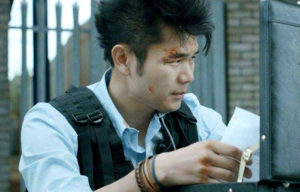
Jean-Paul Ly in the upcoming project, The Division.
JEAN-PAUL LY: As I said before, I was working on Dr. Strange for 7 months. I was part of the fight team so I was helping the choreographer to do the fight scenes for Cumberbatch, and we had so much time. It’s a Marvel movie so it’s big budget, we had everything in abundance and we had time. Now we’re doing Jailbreak and it’s like one fight per day, it’s crazy. With big films it’s like few moves per day. They even had seven units, we had one unit, one camera. So we had to make sure we follow, because if we do long takes and mess up, we need to do it again. And sometimes we had up to nine or ten moves, so you need to nail those moves.
GORAN NJEZIC: You had just one camera?!
JEAN-PAUL LY: One camera.
GORAN NJEZIC: RED?
JIMMY HENDERSON: Yeah, we had RED Dragon.
JEAN-PAUL LY: Sometimes you’re crazy, you have to do it, get hurt, get Red Bull, it’s good. Why? Because we needed to finish. It was like, this is the schedule, we’re not gonna get more days than that. Sometimes as an artist you have to adapt, and I learned so much.
JIMMY HENDERSON: On the set we had to block all the fresh air and all the light to have control of the artificial light. So, in Cambodia, it’s normally 30 to 40 °C. We had two big fans, it was more for them, I was ok. (laughter)
LOY TE: That and the fact that it was an abandoned building when we moved in for the film, and it’s been abandoned for over 10 years. It had no windows or anything, just full of dust and concrete falling apart. We just took out the big pieces so we can clear it and it looks decent in a way for a Cambodian prison, you would imagine it to be really like hard core. Every morning we would come in, have breakfast, warm up, then we’d start. We do one take, the moment we start to do that one take, all that dust got up in the air, and the rest of the day we’re just stuck in this box, there was no airflow…
JEAN-PAUL LY: No airflow, no air conditioning, at 40 °C, and you don’t have time, you just have to do it.
LOY TE: Every time there’s a break, everyone would just run out to get some fresh air. (laughing)
JEAN-PAUL LY: Everyone’s on the ground lying, and then it’s: let’s go again! Amazing process.
LOY TE: There are a few takes we messed up because someone forgot the mask. Sometimes we were wearing masks because it would get really dusty. They would have masks while they rehearse, and then when we’d go for the take, they’d remove them. There were a few takes where some of them would forget to remove the masks. (all laughing) It’s like ok cut, that was good… did you left the mask on?
JEAN-PAUL LY: It went that far.
MATIJA TOMIC: JP, did you get to work with Scott Adkins on Dr. Strange?
JEAN-PAUL LY: Yeah, when he came for the rehearsal for his fights. They wanted him to showcase his Boyka moves, so that’s where he does the Guyver kick and the kick 720, because the choreographer Jonathan Eusebio (I was working with Jonathan) wanted Scott Adkins fans, Boyka fans to see these moves in a Marvel film. So that was great, he came maybe like two or three times to do his fights, it was very quick because Scott is so good. He does his stuff, we were laughing, drinking, ok bye bye, and he goes. That’s because he is a very good martial artist, very good.
Thanks again to Martin Sandison, Matija Tomic, Goran Njezic, Jean-Paul Ly, Tharoth Sam, Jimmy Henderson and Loy Te for putting together this interview.

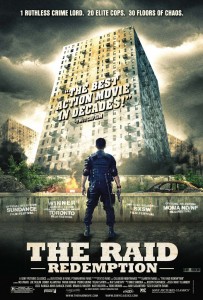
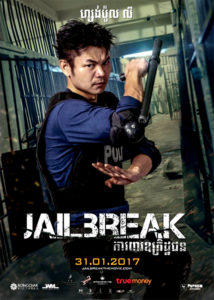
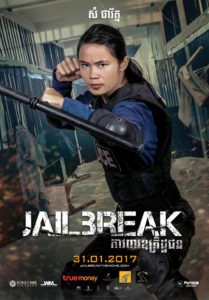
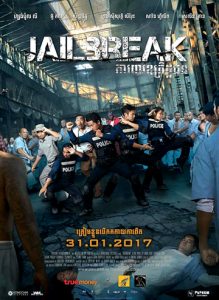

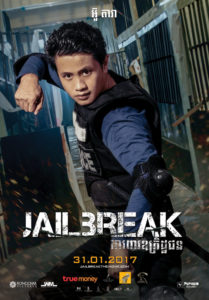


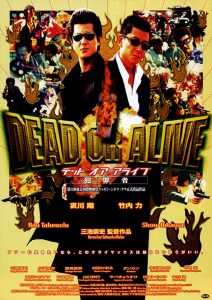
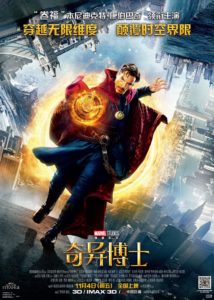


It’s great to read about what a closely knit group they all are. I imagine their next collaboration will expand with everything they learned on Jailbreak.